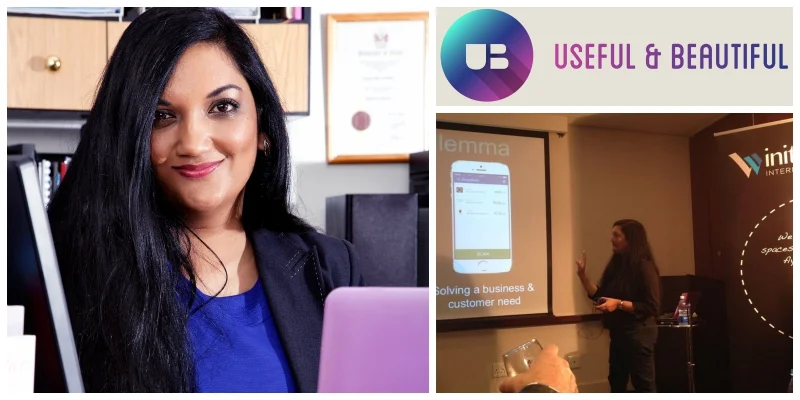By Lynette Hundermark, co-founder and chief product officer, Useful and Beautiful
This is not another "year of the mobile" trends piece - that ship sailed five years ago. If you do not have a mobile presence then you really should not be playing in the digital space, because now in 2017, it is not a matter of digital vs mobile or marketing vs digital - your consumer is connected, whether you like it or not, and is partaking in an omnichannel world.
The number of smartphone users in South Africa as of 2016 are 14.1 million and projected to increase by a further 2 million by the end of 2017, according to Statistica.com. This means that day to day activities such as reading the latest news, checking your bank balance, hailing a taxi and collaborating with work colleagues or friends is likely to happen on a mobile app that enables us to perform all of these functions and more. It is also projected by Gartner that by the end of 2017, the number of mobile app downloads worldwide will reach close to 268 billion times, making mobile apps one of the most popular computing tools in the world.
An app for everything?
With already over 2 million apps in each app store (looking at just Apple and Google), there seems to be an app for just about everything. However, before you start to look at adding another app to that mix, consider relooking at the needs of your consumer base and understand what makes them tick by revisiting the features of your app and adding those that will add value to them.
In 2017, these are likely to be the key mobile app trends that will ensure your app consumers keep coming back.
1. The omnichannel consumer
Despite how great an app idea you have, remember that your app is just another touch point in your digital ecosystem and it is a consumer expectation that it will work seamlessly across all channels. The mobile phone is the one thing your consumer will carry with them no matter where they are and if there is one experience that you want to get right, it’s on mobile and it has to be a unified experience that will bring all channels together.
An example to illustrate this would be the traditional retail sector. Still to this day, brick and mortar retailing continues to dominate retail sales, in comparison to mobile commerce. However, retail consumers will create the omnichannel experience themselves by using mobile as a catalyst (e.g. looking up product information and price comparisons) to drive them instore where they will complete the path to purchase.
2. User experience (UX) defines your app success
With the millions of apps out there, some of which are quite similar in functionality, they key differentiator is the user experience – how easy is it for your user to actually use your app. Mobile UX is not a shrunk down version of your website and needs to be intuitive and easy to use, while also remaining fast.
Single purpose apps still reign supreme in terms of speed and user experience and it’s likely to continue that way – do one thing well and make it the best possible experience for your user without compromising on speed and data costs. 2017 is likely to see the rise in user-centric mobile design to improve UX.
3. Location-based services
Utility apps are still on the rise and relevancy is key in the success of these apps. Many of these apps check your location and present you with recommendations that are near you, and with the improvement of mapping services 2017 is likely to see more apps integrating with location-based services.
4. Enterprise mobility to focus on productivity
Since the explosion of consumer apps, enterprises have dabbled in mobile apps but not to the same consumer app expectation. 2017 will see enterprises step up their efforts in mobile enterprise app development to gain a competitive advantage as users have become more and more reliant on apps for their productivity.
5. Purposeful rather than purposeless apps
Getting an app out there only for the sake of being cool or ensuring that you have ticked a box for your brand or department is not only annoying to the person who has taken time to find and download that app, but also a waste of valuable budgets that could have been put to better use.
Before embarking on an app, understand the value it will be adding to your user and give them a reason to want to use the app. 2017 is definitely going to be the year where apps with a purpose will take precedence over those apps that get downloaded and used for 5 minutes before being deleted.
Lynette Hundermark co-founded U&B from Prezence Digital, where she served as the Apps Business Director and Head of Product Strategy. Her prior roles included mobile roles within the Naspers Group and she started her tech career as an enterprise analyst/programmer working in the UK for brands that included HSBC, Citibank , and Tesco. With a BSc (Hons) in Computer Science & Psychology , Lynette also holds various technology certifications in development, SCRUM and human factors in computing. Lynette's appetite for the mobile space while keeping abreast of the latest industry trends has established her locally as an expert tech commentator and opinion leader. She is also involved in a variety of mentorship programmes that aims to build a greater community of passionate people in the tech and mobile field.
WEBSITE | FACEBOOK | TWITTER | INSTAGRAM | EMAIL lynette@usefulandbeautiful.co.za
Read more articles by Lynette









